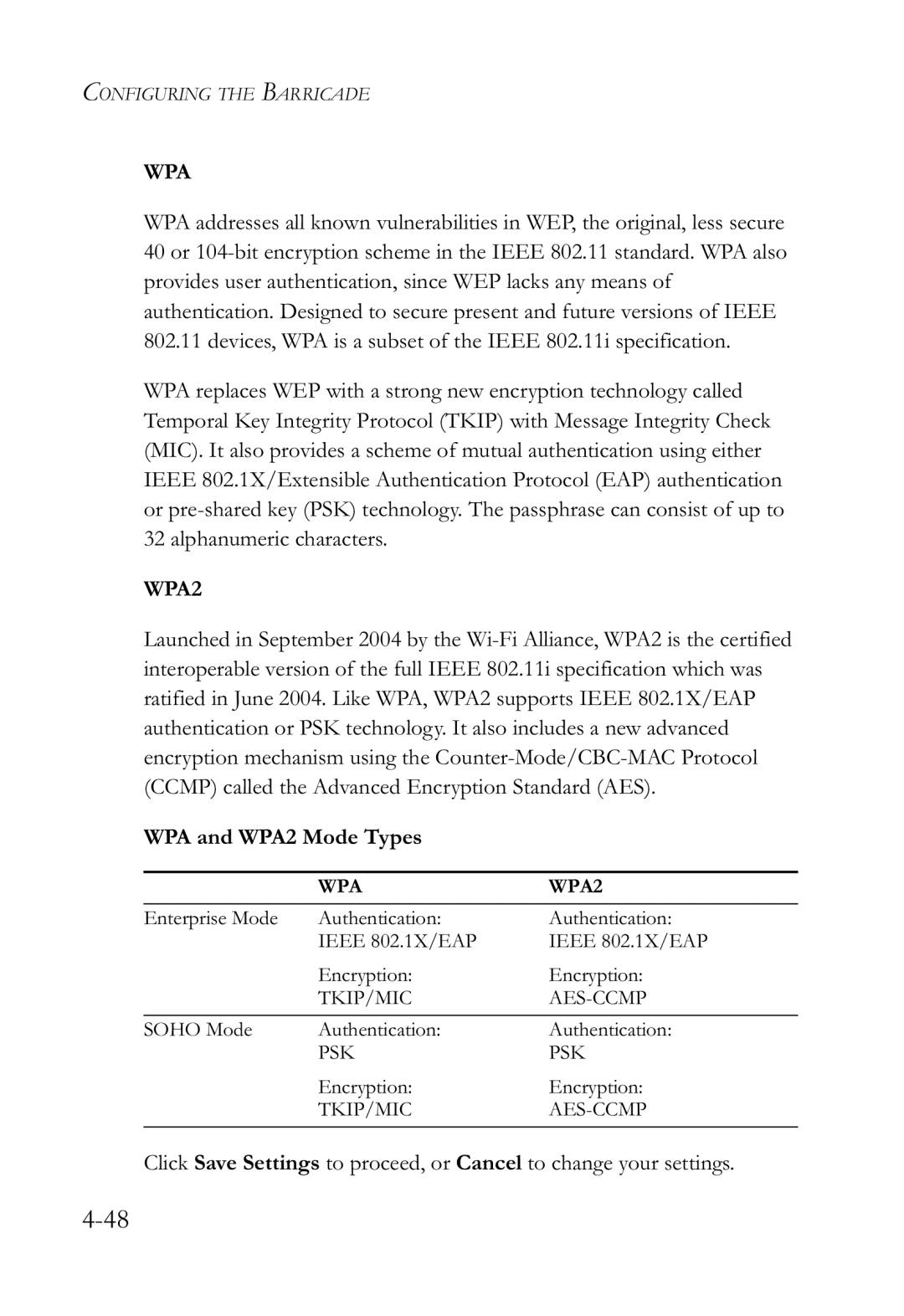SMCWBR14-G2 specifications
The SMC Networks SMCWBR14-G2 is a multifunctional wireless broadband router designed to provide high-speed internet connectivity for home and small office environments. This versatile device combines the functions of a router, switch, and access point in a compact unit, making it an ideal solution for users looking to streamline their networking needs.One of the standout features of the SMCWBR14-G2 is its compatibility with the IEEE 802.11g and 802.11b wireless standards. This allows the device to operate at speeds of up to 54 Mbps, providing reliable connectivity for various digital activities such as streaming media, online gaming, and web browsing. The router also supports backward compatibility with older wireless standards, ensuring that legacy devices can connect without issues.
The SMCWBR14-G2 incorporates advanced security features, including WPA/WPA2 encryption and a built-in firewall. These features help protect the network from unauthorized access and cyber threats, ensuring user data remains secure while browsing the internet. The router offers options for setting up a guest network, which enables visitors to access the internet without granting them access to the primary network.
Equipped with a four-port 10/100 Mbps Ethernet switch, the SMCWBR14-G2 allows multiple wired devices to connect to the network simultaneously. This feature is particularly advantageous for users who prefer the stability of a wired connection for activities that require high bandwidth, such as online gaming or video conferencing. The router also supports multiple SSIDs, allowing users to create distinct networks for various purposes.
The SMCWBR14-G2 is designed with user friendliness in mind. It comes with an intuitive web-based interface that facilitates easy setup and management of network settings. The device supports various configuration options, including QoS (Quality of Service) settings, which prioritize bandwidth allocation to essential applications, ensuring optimal performance.
Overall, the SMC Networks SMCWBR14-G2 is a robust and reliable networking solution that balances performance, security, and ease of use. Its ability to cater to both wired and wireless devices, combined with essential security features and user-friendly management options, makes it a suitable choice for anyone looking to enhance their home or small office networking experience.
